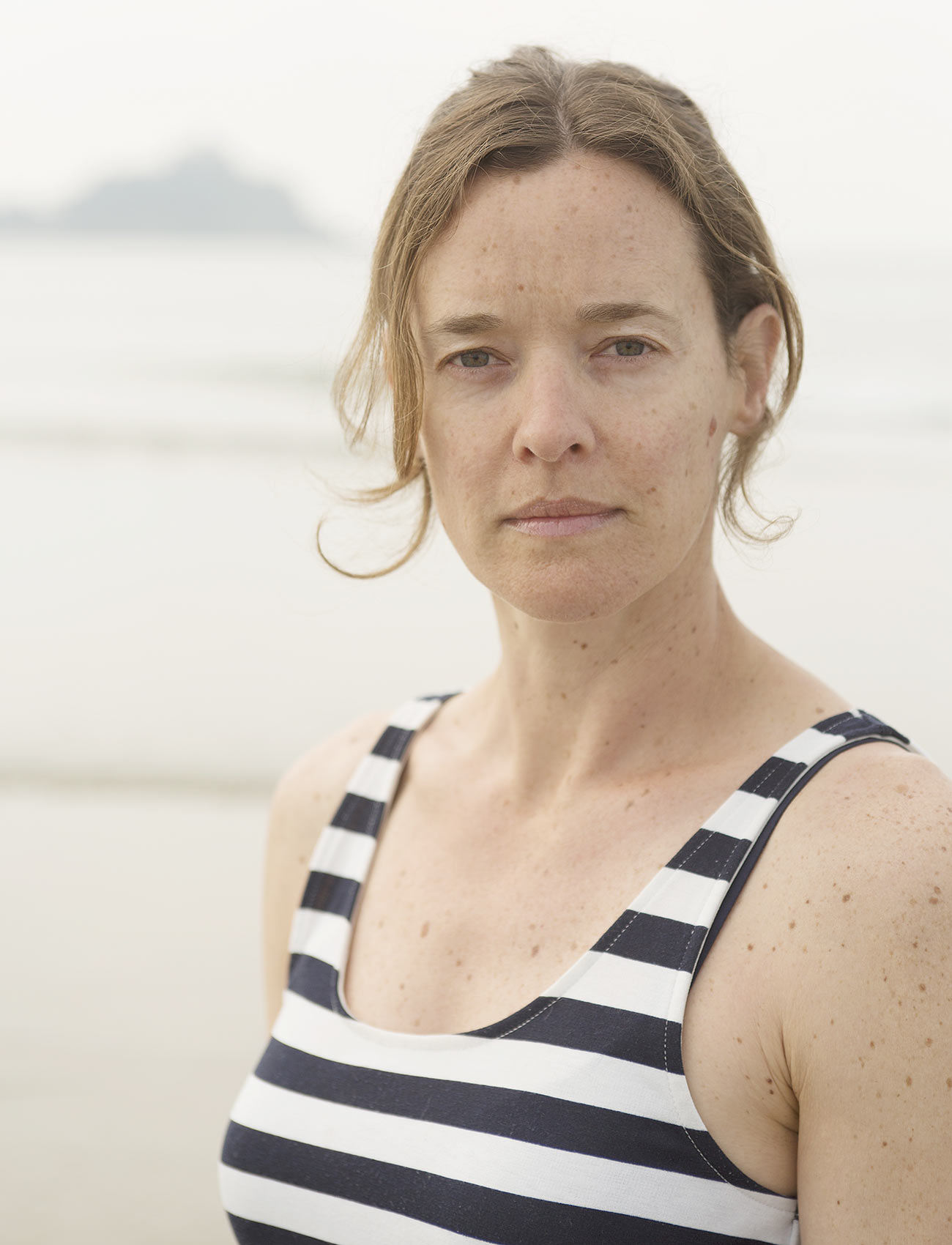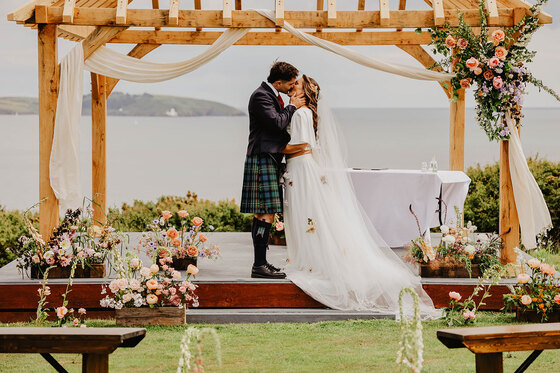There’s a battle brewing in wedding world, with two opposite sides vying for the most attention. Both are infiltrating every element of the day, from the dress to the décor and, most notably, the flowers. Welcome to the stylistic conundrum that is: minimalism versus maximalism.
 Emma Hewlett Floral Design The Unbridled
Emma Hewlett Floral Design The Unbridled
With current floristry trends adopting either a ‘less is more’ or ‘go big’ approach, it can be difficult to envision the effect your chosen blooms will have on your day. On one hand, you might adore the idea of pared-back petals for understated impact, while, on the other, the lure of statement flora is their instant and undeniable wow factor.
“Minimalism versus maximalism in floristry can be seen in several ways,” says florist Emma Hewlett (emmahewlett.co.uk). “We are currently seeing a big influence from Australian wedding looks whereby foliage doesn’t play a heavy role in designs that are created purely from flowers, with no green and sometimes even just one flower variety.”
Hannah Burge from Fuss Pots (fusspots.co.uk) agrees. “Keeping to one strong colour or one flower gives big impact,” she says. “For example, red roses can really pop and are a stunning contrast against muted sea blue and sand.”
There are multiple ways to achieve the maximalist look. Choosing mono-florals (a single variety and colour) or colour-blocking with a single saturation creates a striking focus that can be used everywhere from the bouquet and buttonholes to the centrepieces and ceremony space.
 Perdie's Flowers Verity Westcott Photography
Perdie's Flowers Verity Westcott Photography
One of the leading statement floral features is installations, particularly aerial ones such as floral chandeliers and hoops, as well as the burgeoning trend of dance floor installations. Others include architectural arrangements, staircase garlands, flower-covered cakes, dynamic aisles and tablescapes that play with a variety of colours, textures and heights. While layering your blooms, also explore the idea of arrangements in unusual or oft-neglected spaces, along with using lesser-known blooms and natural elements – for example, mushrooms, which add a fabulously rustic and textural twist.
Fusing a range of botanicals can create jaw-dropping displays with a maximalist feel, mashing styles and aesthetics that reflect wild natural spaces and provide bold and dramatic backdrops to boot. “Trees, plants and flowers can be used seamlessly together to create an incredible display, feeling like you are saying your vows in an English country garden or dining in a tropical jungle,” enthuses Hannah. “Royal and celebrity weddings alike have used plants and trees to create huge entrances and displays.”
 Emma Hewlett Floral Design Hannah Barnes Photography
Emma Hewlett Floral Design Hannah Barnes Photography
“We’re seeing a big request for the ‘maximum’ with installations still proving popular in marquees and grand doorways,” notes Emma. “We have been designing some spectacular hanging installations using just a mix of greenery and adding lighting to ‘lift’ the design.”
Experimenting with flowers, greenery, lighting and the range of available spaces – both inside and out – can all ensure showstopping floristry, whether it’s of the simplistic or standout persuasion.
And remember… there are no rules. Work with your venue, theme, budget and florist to create a look and feel that fits you and your vision, and you can’t go too far awry. You could even attempt to conflate the two trends: a dramatic floral archway to utter your vows beneath, then express your more minimalist side with single-stem vases dotted throughout the reception space.
“Many of our weddings this year are seeing the style of single-variety flowers – but en masse, so I guess a mix of both!” observes Emma of the growing tendency toward merging the opposing aesthetics. The contrast alone could prove highly impactful; just make sure you engage the professional services of an experienced florist to help you strike the right stylistic chord.
Meanwhile, for those firmly rooted on the side of small and delicate floral designs, be assured that these can create a similarly stirring effect.
“Minimalism is playing a part in bouquet designs with many brides moving away from the oversized style and opting for something more dainty,” reveals Emma of the popularity of petite posies. “And lots of single-stem vases with only roses or dahlias is proving very popular – often in a white colour palette, creating a very crisp, modern look.”
 Emma Hewlett Floral Design Paige Grace Photography
Emma Hewlett Floral Design Paige Grace Photography
Speaking of the all-important palette, this is something to discuss with your florist before settling on a scheme. Seasonality will play a role in what is available, as will your overarching theme or dress code.
“Colour trends seem to be going one of two ways too – minimal with just whites or full-on summer vibes with a mad mix of colours,” says Emma of the emerging tones. These currently include pinks, greens and jewel tones including ruby, emerald and turquoise, while bright, colour-pop shades are also flooding florists’ mood boards.
 Fuss Pots Freeformimages Photography
Fuss Pots Freeformimages Photography
Don’t forget to think about where and when you source your blooms. Many florists provide seasonal, home-grown flowers or source local or British blooms for greater sustainability, which remains one of the biggest buzzwords in floristry.
Another advantage of the minimal movement is its environmental impact, as simpler designs can also be more earth-friendly. “I have used dried elements, local driftwood and high seasonal summer flowers found in your typical Devon or Cornwall garden to keep environmental impact to a minimum,” explains Hannah. “At a recent wedding, although stem count was kept to a minimum, we worked with the stunning landscape at Watermouth Cove and therefore the impact was certainly not lost. I find that more and more couples want to work with the surroundings on offer and ‘borrow the landscape’, therefore enhancing their venue rather than trying to change it,” she adds. “This is a slowly growing trend that is based on rising costs of living as well as being more mindful of how one’s wedding will impact the environment.”
 The Velvet Daisy Rik Pennington Photography
The Velvet Daisy Rik Pennington Photography
Another way to achieve a stripped-back and more eco-friendly look is to style your spaces using plants and trees. “This gives real bang for your buck!” says Hannah. “They can fill spaces that would cost the earth in flowers and I love the simplistic and organic look they can achieve.”
The desire for living arrangements like trees, potted palms and miniature herb gardens are the perfect solution to enhance the sensuous and sustainable aspects of your wedding, with the bonus that they can be gifted or taken home and planted as a lasting keepsake of your day.
 Emma Hewlett Floral Design Hannah Barnes Photography
Emma Hewlett Floral Design Hannah Barnes Photography
And finally, florists and style forecasters are reporting another way to emphasise your chosen look beyond the use of the flowers: floral detailing. There’s a host of decorative elements through which your minimalist or maximalist vision can be accentuated, such as the table linens (think botanical embroideries and patterns), stationery (plant motifs, floral prints), candleholders and glassware (colour-matched to your blooms) and petal-pretty ornamentation everywhere from the dinner plates to the flatware.
The future of floristry also sees an emphasis on the vessels, especially with non-traditional pots and vases. Combining elements of your flowers’ colour, scent, variety and volume with where they’re placed – and what they’re placed in – adds extra dimension to your blooms, whatever end of the style spectrum you land.
Main image Emma Hewlett Floral Design Paige Grace Photography
words Hannah May








.jpg)












